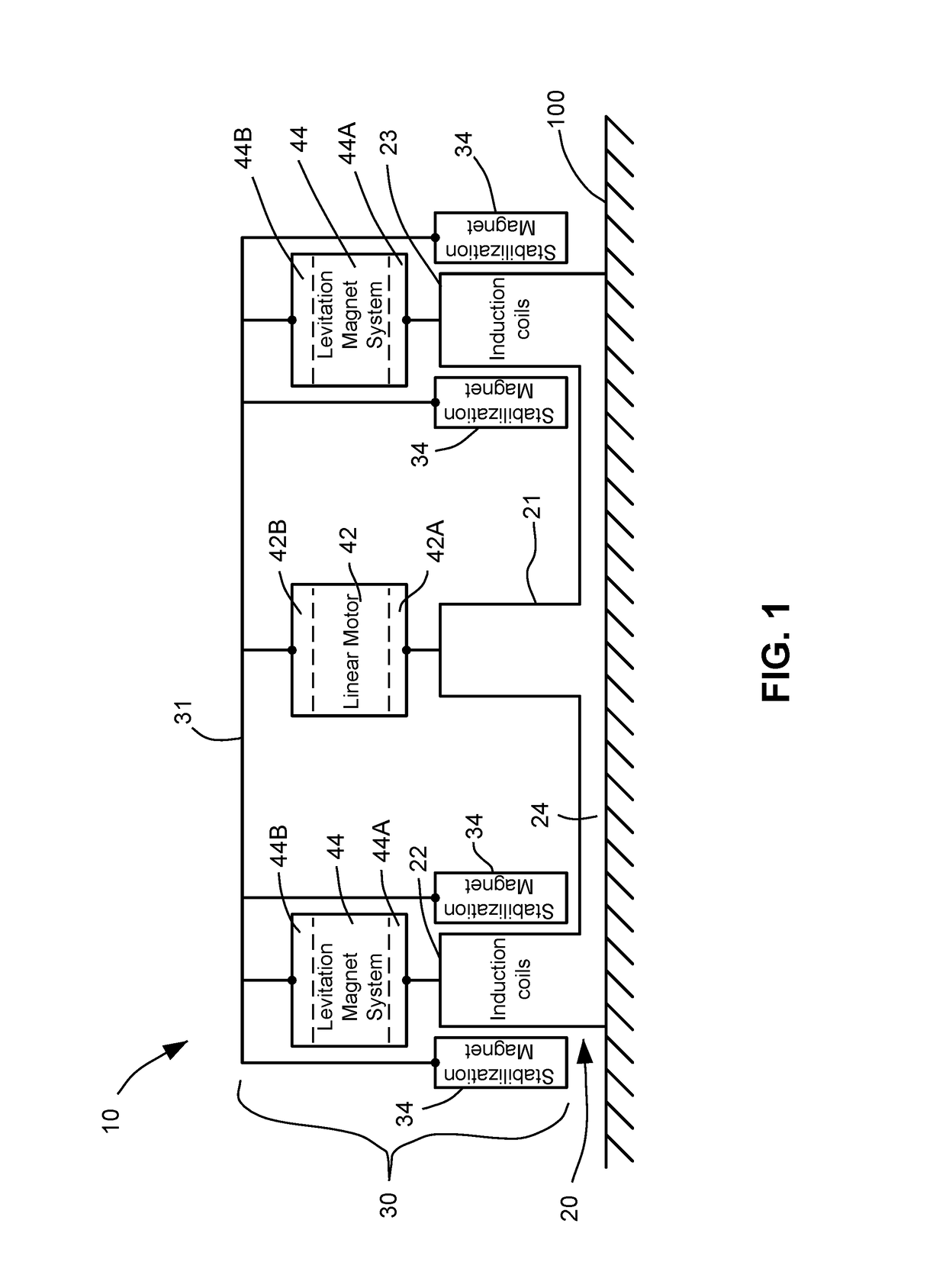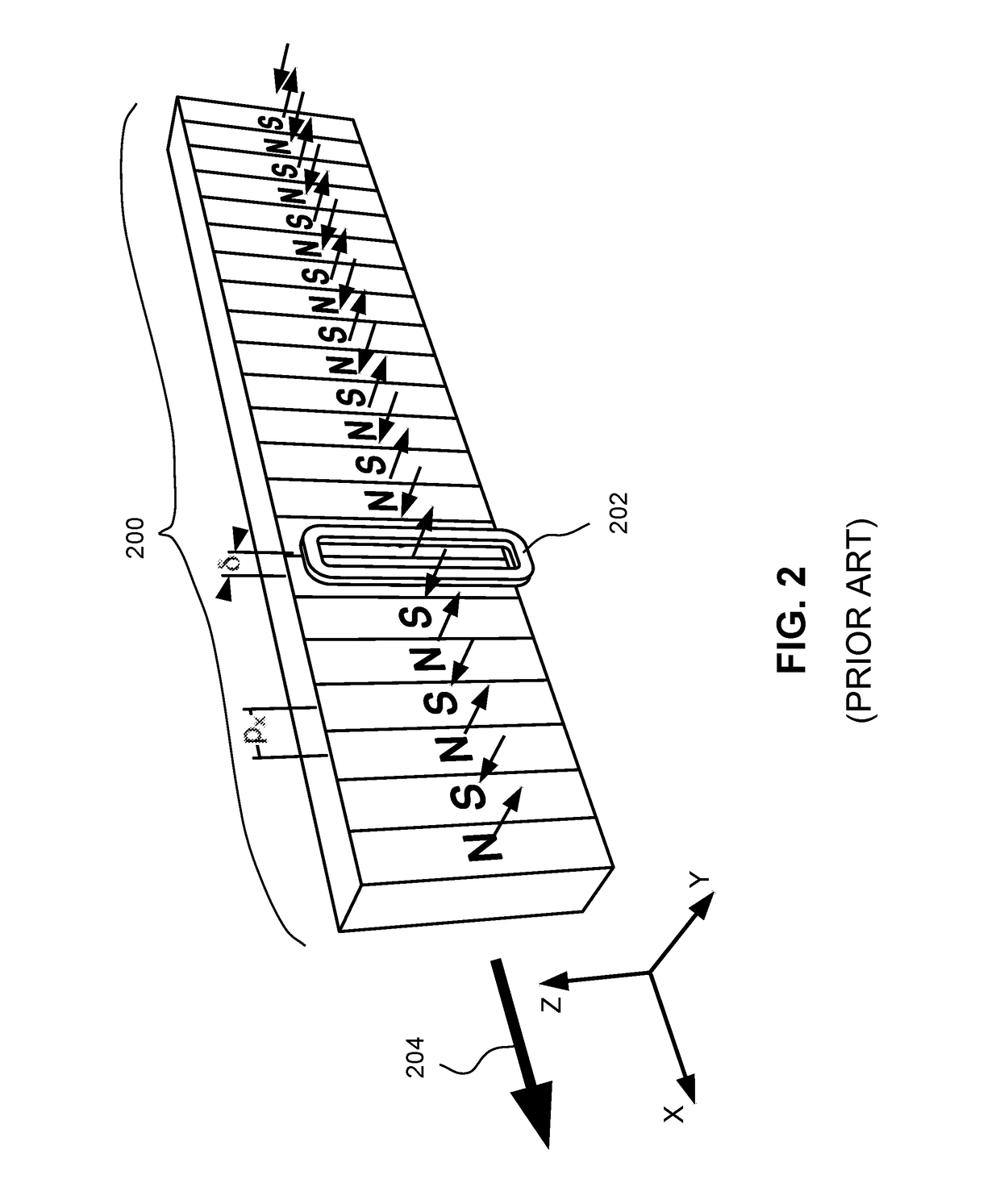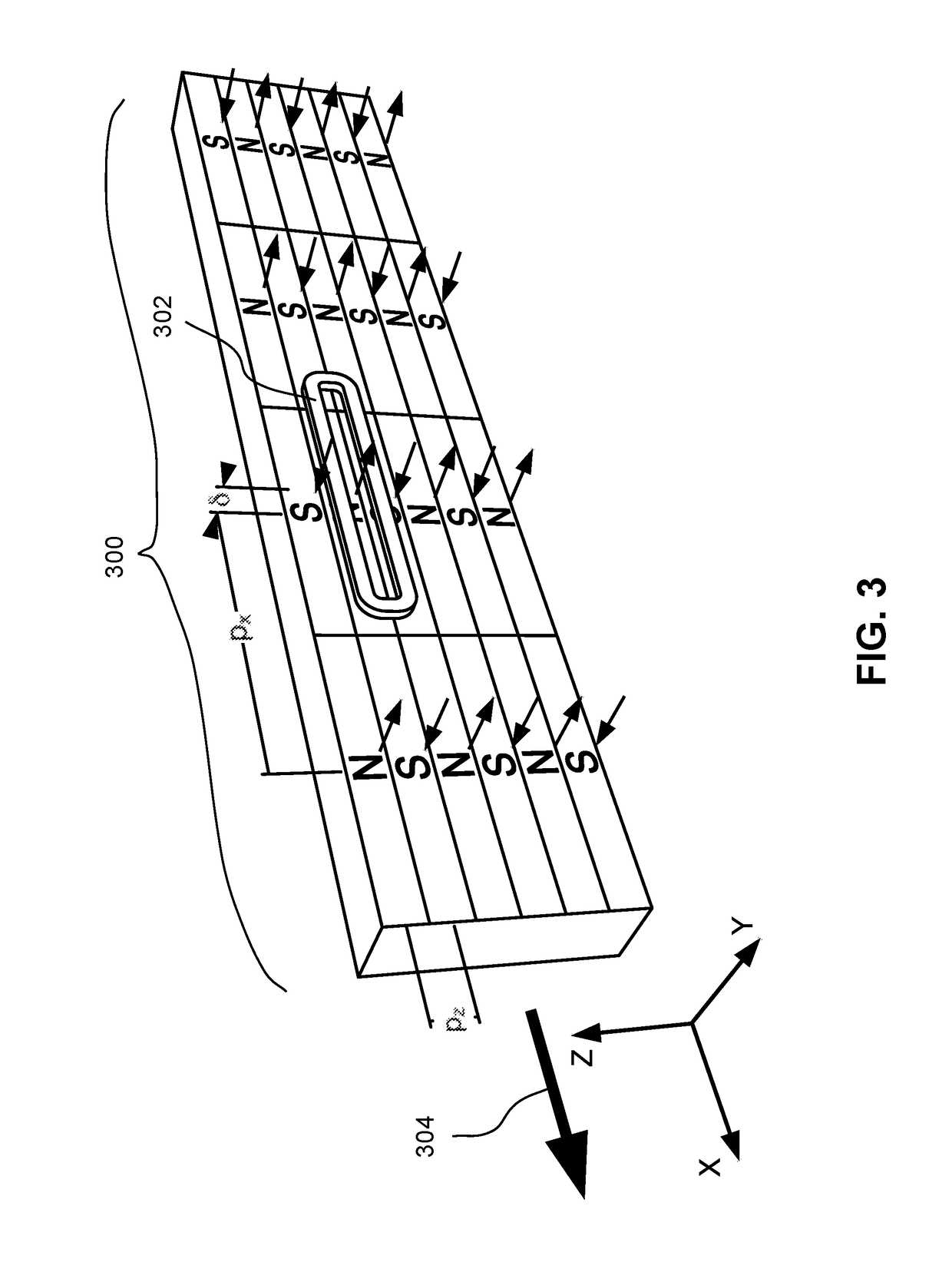Permanent magnet maglev using passive, low-frequency electromagnetic stabilization
a permanent magnet and low-frequency electromagnetic stabilization technology, applied in the field of magnetic levitation (or “ maglev”) systems, can solve the problems of high instability, energy consumption of dissipation in the electromagnets of the train, and energy consumption of the dissipation of the eddy current in the guideway's induction coil, and achieve the effect of cost-effective construction and operation
- Summary
- Abstract
- Description
- Claims
- Application Information
AI Technical Summary
Benefits of technology
Problems solved by technology
Method used
Image
Examples
Embodiment Construction
[0028]Referring now to the drawings and more particularly to FIG. 1, a maglev system that uses permanent magnet-based levitation in accordance with an embodiment of the present invention is illustrated. The system, generally referred to by numeral 10, includes two major elements referred to herein as a stationary guideway 20 and a vehicle 30 capable of movement relative to guideway 20. The components associated exclusively with guideway 20 will be indicated using reference numerals in the 20's and the components associated exclusively with vehicle 30 will be indicated using reference numerals in the 30's.
[0029]The system shown uses attraction of permanent magnets on vehicle 30 to ferromagnetic materials in guideway 20. As is known in the art, permanent magnet attraction can provide permanent levitation that is stable with respect to vertical disturbances but is unstable horizontally. This is a consequence of Earnshaw's Theorem which states that there can be no statically-stable levi...
PUM
 Login to View More
Login to View More Abstract
Description
Claims
Application Information
 Login to View More
Login to View More - R&D
- Intellectual Property
- Life Sciences
- Materials
- Tech Scout
- Unparalleled Data Quality
- Higher Quality Content
- 60% Fewer Hallucinations
Browse by: Latest US Patents, China's latest patents, Technical Efficacy Thesaurus, Application Domain, Technology Topic, Popular Technical Reports.
© 2025 PatSnap. All rights reserved.Legal|Privacy policy|Modern Slavery Act Transparency Statement|Sitemap|About US| Contact US: help@patsnap.com



